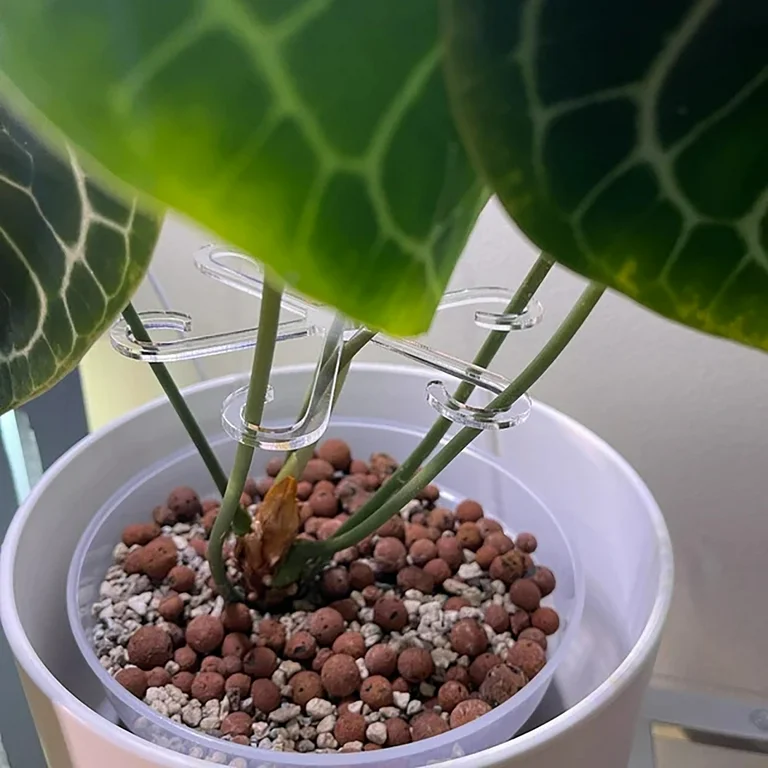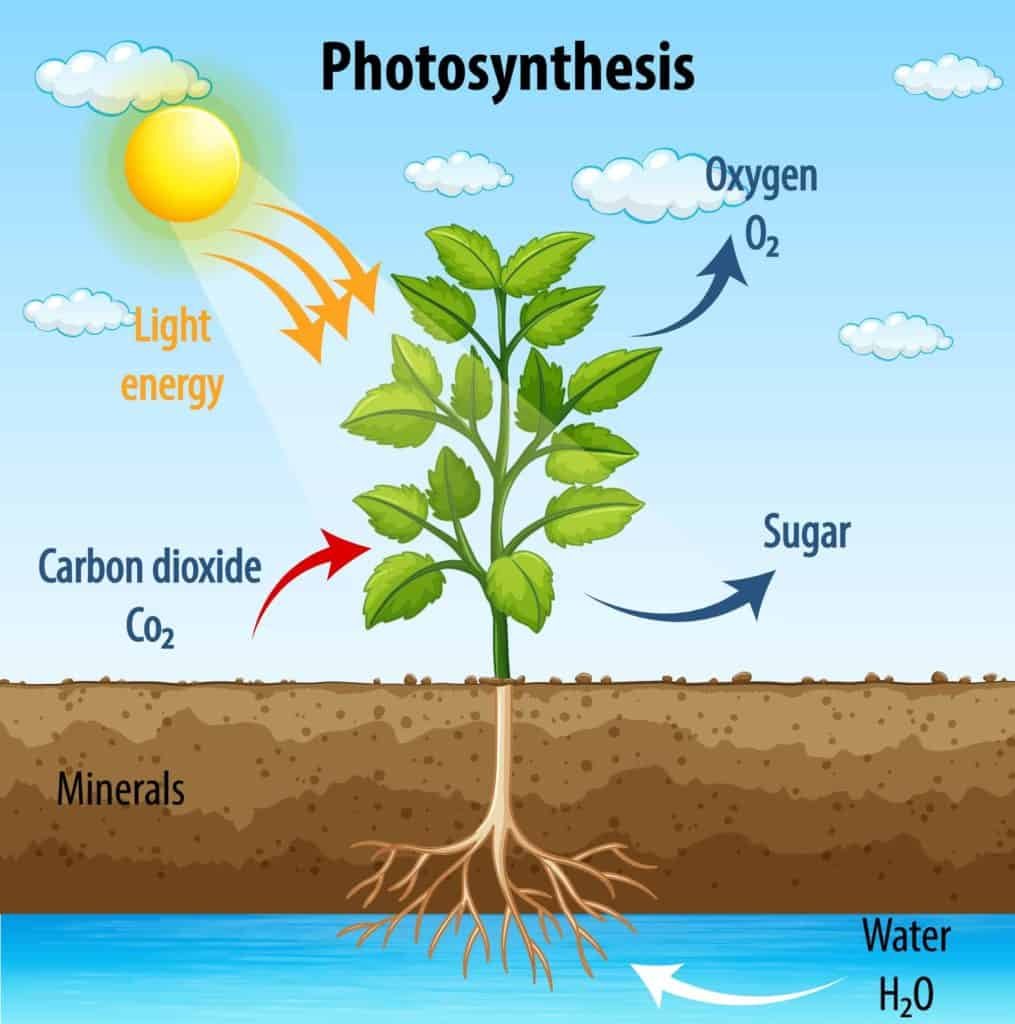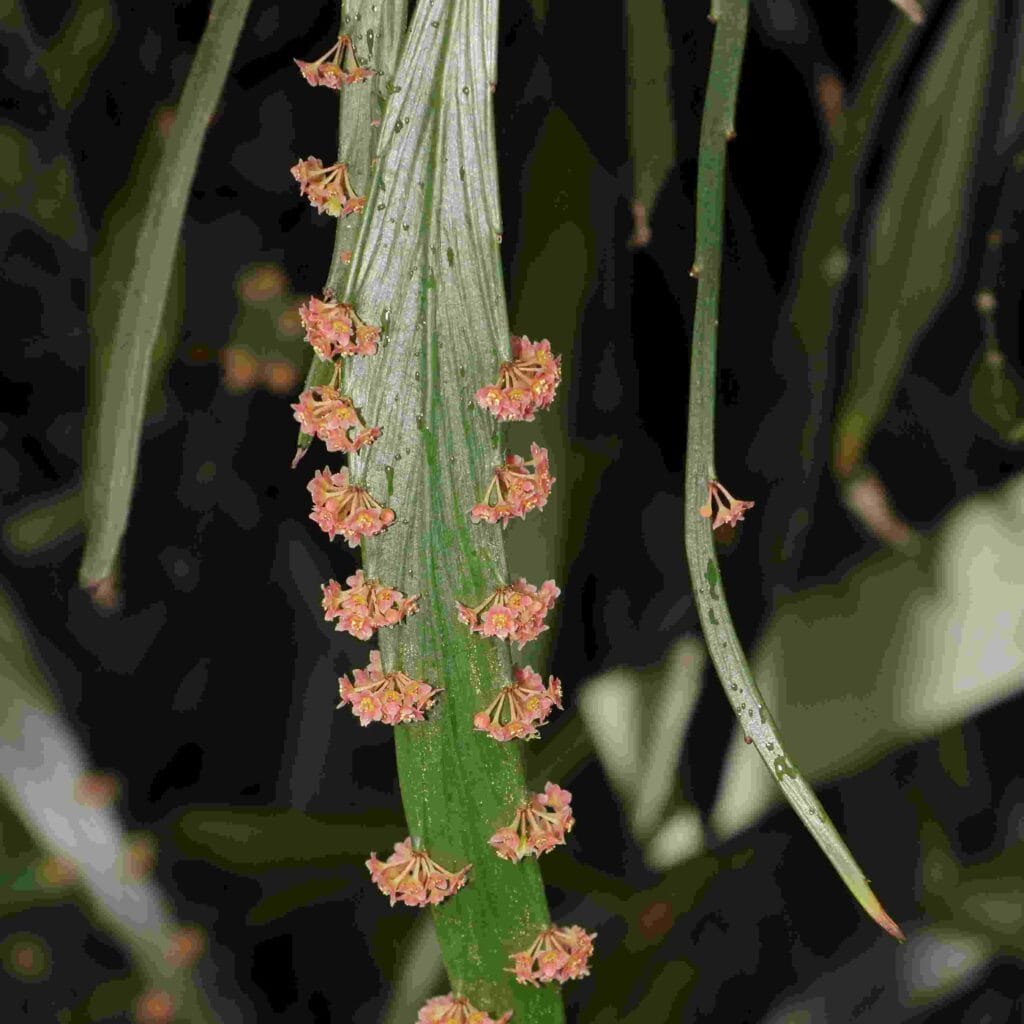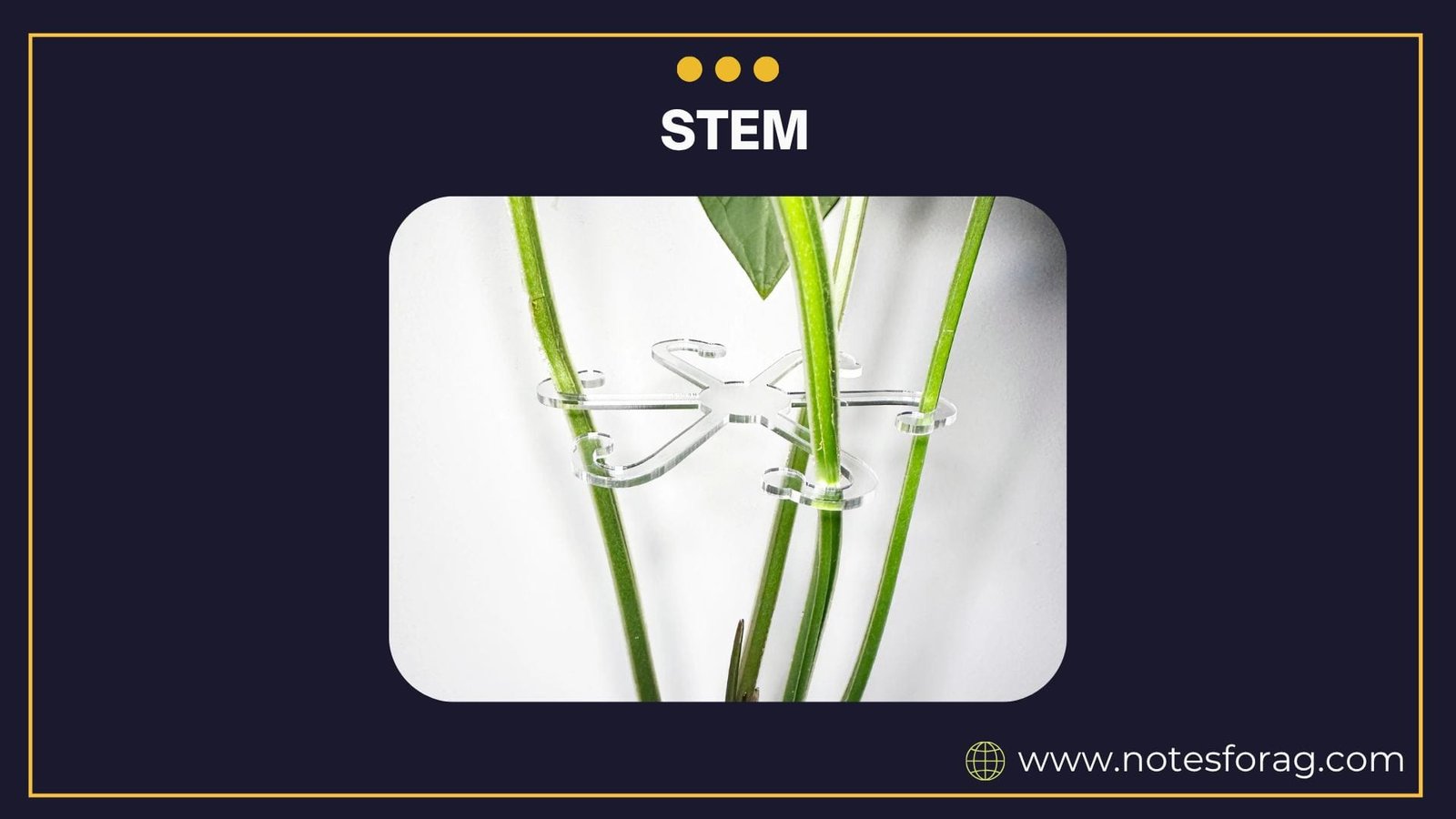INTRODUCTION
The stem is a vital vegetative organ in angiosperms (flowering plants), serving multiple essential functions including support, conduction, storage, and sometimes reproduction. It acts as a central axis that bears branches, leaves, flowers, and fruits. Unlike roots, stems grow upwards and are positively phototropic, allowing plants to position their leaves effectively for light capture. Understanding the morphology of the stem is critical for identifying plants, studying their growth behavior, and improving agricultural and horticultural practices.
The diverse forms and modifications of stems reflect how plants adapt to their environments and fulfill various ecological roles. Stems can be soft and herbaceous or hard and woody depending on the type of plant, and their growth pattern can be continuous (monopodial) or sympodial (interrupted by flower formation).
DEFINITION OF STEM
A stem is the ascending part of the plant axis that develops from the plumule of the embryo. It bears nodes and internodes, with nodes being points of leaf attachment and internodes being the spaces between two nodes. Stems typically bear buds either terminal or axillary that develop into branches, leaves, or flowers. Stems are usually aerial and green when young, becoming woody or hard in mature plants. However, they can be modified for different purposes like storage, support, or vegetative propagation. Unlike roots, stems do not have root caps or root hairs.
They can be solid or hollow, branched or unbranched, and may exhibit a range of surface textures and growth habits depending on environmental conditions and genetic makeup.
Table of Contents
CHARACTERISTICS OF STEM
- Arises from the plumule of the embryo and grows upward.
- Bears nodes and internodes that structure the plant’s framework.
- Possesses buds terminal (apical) or axillary for new growth.
- Exhibits positive phototropism (grows towards light) and negative geotropism (grows opposite to gravity).
- Bears leaves, branches, flowers, and fruits which aid in reproduction and photosynthesis.
- Often green in young stages due to chlorophyll, supporting early photosynthesis.
- May become woody and rigid in mature stages, providing long-term support.
FUNCTIONS OF STEM
1. Support

The stem provides mechanical support to leaves, flowers, and fruits by holding them upright and exposing them to sunlight and air. This upright positioning maximizes the surface area available for light absorption and pollinator access, which is crucial for photosynthesis and successful reproduction.
2. Conduction
The stem serves as a conduit for transporting essential substances throughout the plant. Water and dissolved minerals absorbed by the roots are conducted upward through the xylem vessels, while food produced in the leaves (via photosynthesis) is transported to various parts of the plant through the phloem tissue.
3. Storage
In many plants, stems store nutrients and water in specialized parenchymatous tissues. This function is especially vital in plants growing in arid or drought-prone environments. Modified stems like tubers (e.g., potato) store starch, while others like corms and bulbs store sugars and water.
4. Photosynthesis

Green stems, especially in young or modified plants (e.g., phylloclade), contribute to photosynthesis when leaves are reduced or absent. This helps plants thrive in extreme conditions, such as deserts, where water conservation is key and leaves might be absent to reduce transpiration.
5. Vegetative Propagation
Some stems, particularly modified ones such as runners, stolons, and suckers, facilitate asexual reproduction. These stems can develop into new plants, enabling quick propagation without the need for seeds. This is widely used in horticulture and agriculture for multiplying plants with desirable traits.
TYPES OF STEMS
1. Aerial Stem
These are the most common and visible stems that grow above the ground. They provide structural support to the plant and bear leaves, buds, flowers, and fruits. They may be herbaceous (soft) or woody, and their appearance varies from upright and erect to trailing or climbing.
2. Subaerial Stem
These stems partially grow above and below the soil surface. They often help in vegetative propagation and are typically found in creeping plants. Examples include runners and stolons in strawberry and mint, respectively. Their horizontal spread allows plants to cover ground quickly and colonize new areas.
3. Underground Stem
These stems grow beneath the soil surface and are mainly modified for storage and perennation. They store food and nutrients for the plant to survive adverse conditions. Unlike roots, these underground stems bear nodes, internodes, and buds. Examples include tubers (potato), rhizomes (ginger), corms (colocasia), and bulbs (onion).
REGIONS OF STEM
1. Node
Nodes are the points on the stem where leaves or branches are attached. Each node typically contains one or more axillary buds that can grow into new branches, flowers, or leaves. Nodes are crucial for plant architecture and are involved in both vertical and lateral growth.
2. Internode
The internode is the segment between two successive nodes. The length of internodes determines the height of the plant and the spacing of leaves and branches. In some plants, internodes are shortened (as in cabbage), while in others, they are elongated (as in sugarcane).
3. Apical Bud
Also called the terminal bud, this is located at the tip of the stem or a branch. It governs the plant’s primary growth in length through cell division in the apical meristem. This bud is dominant over axillary buds due to apical dominance, a phenomenon regulated by plant hormones.
4. Axillary Bud
Found in the axils of leaves (where the leaf meets the stem), axillary buds are capable of developing into lateral shoots or branches. They may remain dormant or become active in response to environmental signals or the removal of the apical bud.
MODIFICATIONS OF STEM
Stems adapt through modifications to meet the plant’s requirements for storage, support, protection, and reproduction. These modifications can be classified based on their location and function.
1. Underground Modifications
1.1 Rhizome
Rhizomes are horizontal underground stems with nodes and internodes. They store food and produce new shoots and roots. They serve as organs for perennation and propagation. Example: Ginger, turmeric.
1.2 Tuber
A tuber is an enlarged underground stem storing food, often rich in starch. It bears ‘eyes,’ which are nodes with buds capable of growing into new plants. Example: Potato.
1.3 Corm
Corms are short, upright, and swollen underground stems that store food. They are solid in structure and bear nodes with buds. Example: Colocasia, gladiolus.
1.4 Bulb
Bulbs are specialized underground stems surrounded by fleshy, modified leaves that store food. The central bud grows into a shoot. Example: Onion, garlic.
2. Subaerial Modifications
2.1 Runner
Runners are slender, horizontal stems that grow above the ground from a basal node. They produce adventitious roots and buds at nodes, enabling propagation. Example: Strawberry.
2.2 Stolon
Stolons are similar to runners but may grow just below or along the soil surface. They arch and touch the ground at points where they form roots and shoots. Example: Jasmine.
2.3 Sucker
Suckers arise from underground stems near the base and grow obliquely upward, producing new shoots. Example: Mint, banana.
2.4 Offset
Offsets are thick, short, horizontal branches bearing rosettes of leaves at the tip. Common in aquatic plants. Example: Pistia, water hyacinth.
3. Aerial Modifications
3.1 Tendrils
Tendrils are thin, coiled, sensitive structures that help plants climb and support themselves. They arise from axillary or terminal buds. Example: Grape vine, cucumber.
3.2 Thorns
Thorns are modified stems that become hard and pointed to protect the plant from herbivores. They arise from axillary buds. Example: Bougainvillea, citrus.
3.3 Phylloclade

Phylloclades are flat or cylindrical green stems that perform photosynthesis in place of leaves. Found in xerophytic plants. Example: Opuntia, Euphorbia.
3.4 Cladode
Cladodes are similar to phylloclades but are restricted to a single internode. They also take over the photosynthetic function. Example: Asparagus.
STEM ANATOMY (BASIC)
The internal structure of the stem consists of distinct tissue systems organized into layers.
- Epidermis: The outer protective layer covered with a waxy cuticle. Contains stomata and may bear trichomes or hairs.
- Cortex: Lies beneath the epidermis, made of parenchyma, collenchyma, and sometimes sclerenchyma. Functions in support, storage, and photosynthesis.
- Vascular Bundle: Contains xylem and phloem arranged in rings (dicots) or scattered (monocots). Xylem transports water and minerals, while phloem carries food.
- Pith: Central part made up of parenchyma cells. Prominent in dicot stems.
DIFFERENCE BETWEEN STEM AND ROOT
| Feature | Stem | Root |
|---|---|---|
| Origin | Arises from plumule | Arises from radicle |
| Nodes & Buds | Present | Absent |
| Growth | Usually aerial | Subterranean |
| Function | Support, transport, photosynthesis | Absorption, anchorage, storage |
| Lenticels | Present | Usually absent |
| Root Cap | Absent | Present |
IMPORTANCE OF STEM STUDY IN AGRICULTURE
Studying stem morphology helps in crop improvement, propagation, and plant breeding. Knowledge of modified stems supports techniques in vegetative propagation. Understanding stem behavior helps in pruning, grafting, and optimizing plant architecture for better yield and health. For example, choosing specific stem traits in grapevines can influence fruit quality, while modifying stem height and thickness in cereals can reduce lodging and increase harvestability. Understanding stem types helps in selecting plant varieties suited to specific climates and farming practices.
CONCLUSION
The stem is an essential organ in angiosperms, performing vital structural and physiological roles. Its ability to transport nutrients, support aerial parts, and adapt through various modifications makes it a key feature in plant survival and reproduction. From underground storage organs to aerial climbing structures, stems exhibit immense diversity and adaptability. Studying stem morphology not only aids in botanical identification but also enhances agricultural practices and plant breeding techniques. Recognizing stem types and their functions equips us to use plants more efficiently for food, medicine, ornamentation, and ecological sustainability.
Frequently Asked Questions (FAQs)
What is the stem in angiosperms?
The stem is the plant’s main axis that supports leaves, flowers, and fruits. It also transports water, nutrients, and food throughout the plant.
What are the main functions of the stem?
Stems support the plant body, conduct water and nutrients, store food, and sometimes help in reproduction through vegetative propagation.
How do stems help in plant reproduction?
Some stems like runners, tubers, and rhizomes can reproduce new plants asexually, allowing for rapid propagation.
What are the types of stem modifications?
Stem modifications include underground (tuber, rhizome), subaerial (runner, stolon), and aerial (tendril, thorn) types for support, storage, or reproduction.
Related Articles

